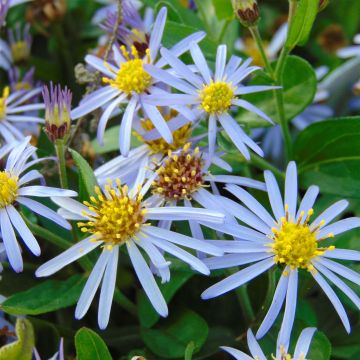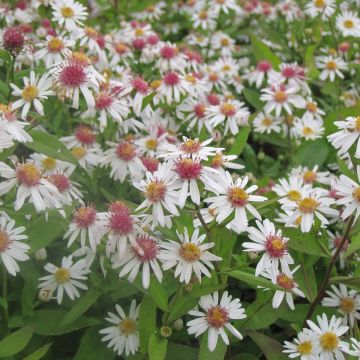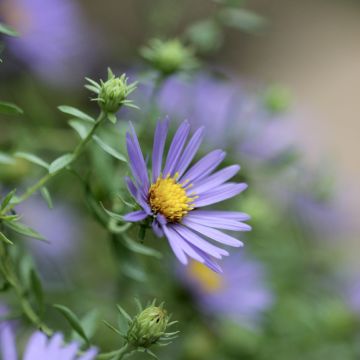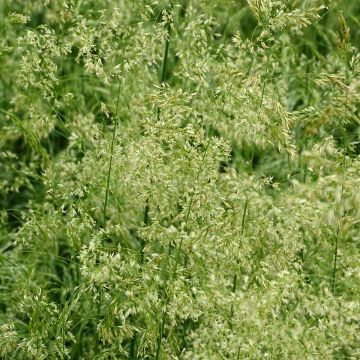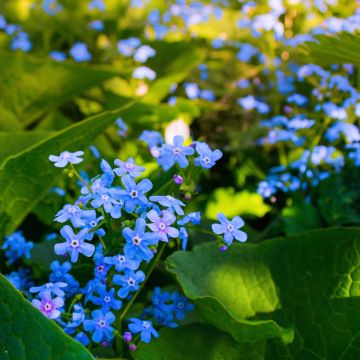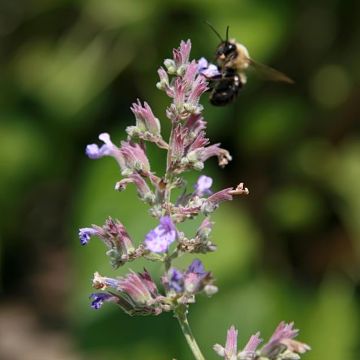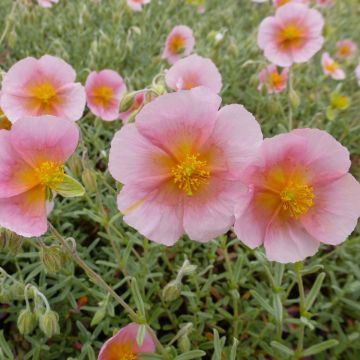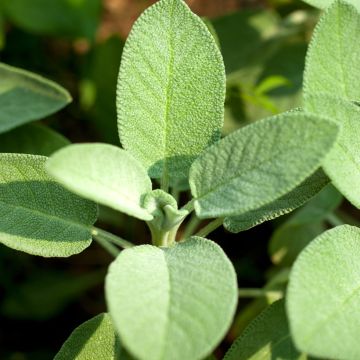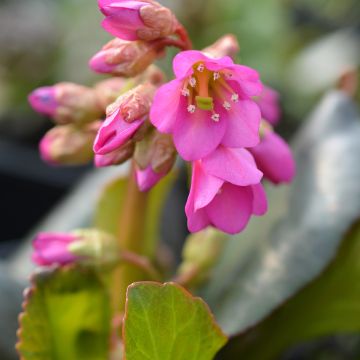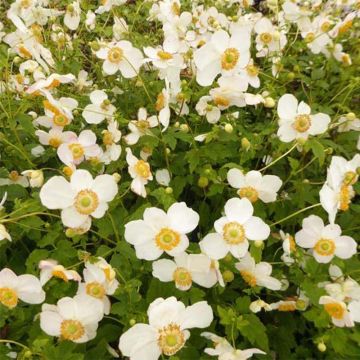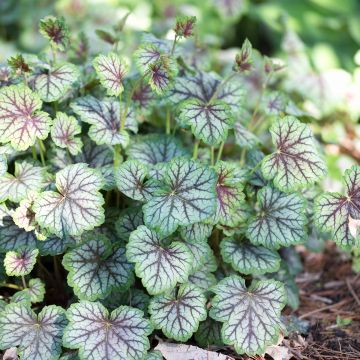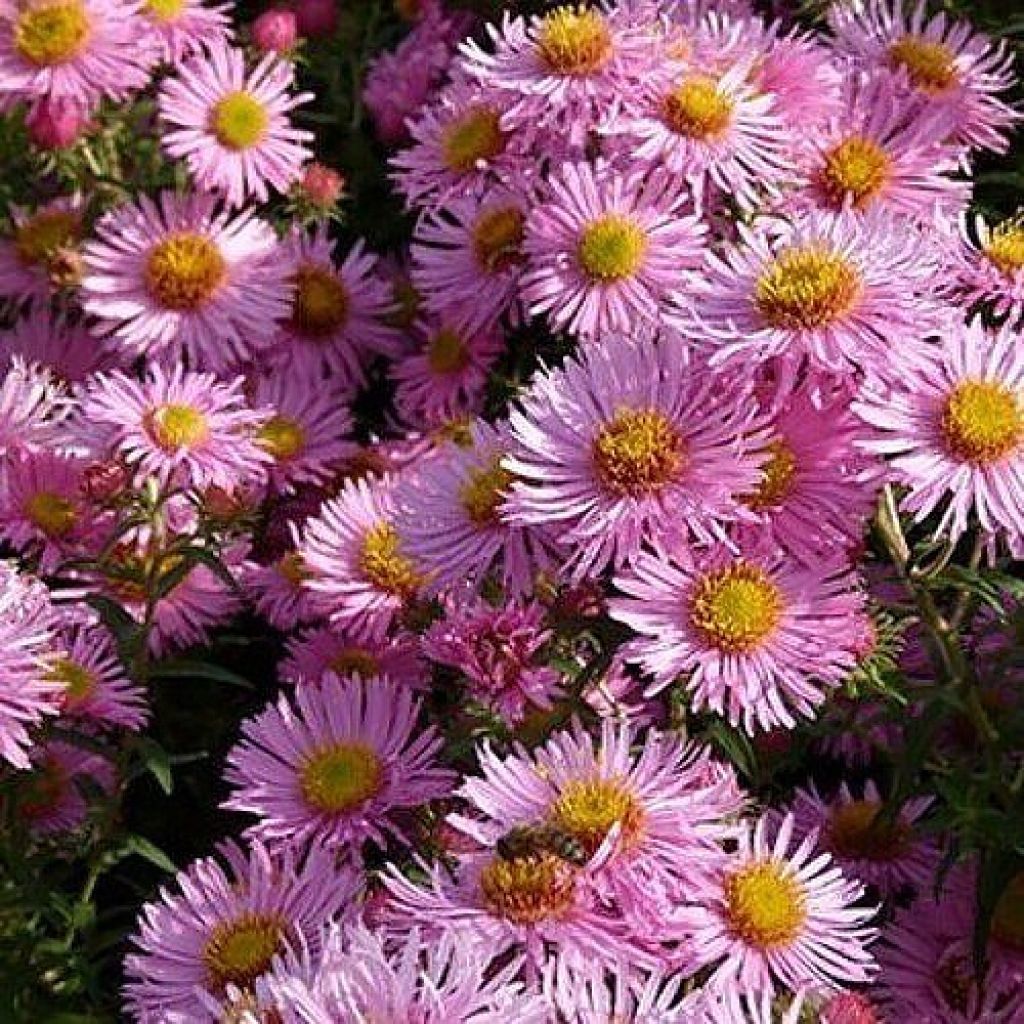

Aster novae-angliae Annabelle de Chazal
Aster novae-angliae Annabelle de Chazal
Aster novae-angliae Annabelle de Chazal
New England Aster, Michaelmas Daisy
Juste sublime! Beautifully sized flowers for an aster with a very bright medium pink colour and powdery mildew!
Candice, 22/09/2023
This item cannot be shipped to the selected country
Delivery charge from €5.90
Delivery to Corse prohibited
More information
Schedule delivery date,
and select date in basket
This plant carries a 12 months recovery warranty
More information
We guarantee the quality of our plants for a full growing cycle, and will replace at our expense any plant that fails to recover under normal climatic and planting conditions.
From €5.90 for pickup delivery and €6.90 for home delivery
Express home delivery from €8.90.
Delivery to Corse prohibited: UE law prohibits the import of this plant from mainland France to Corse as part of the fight against Xylella fastidiosa. Please accept our sincere apologies.
More information
Does this plant fit my garden?
Set up your Plantfit profile →
Description
Aster novae-angliae Annabelle de Chazal is a delightful variety of New England Aster that is covered in beautiful pink daisies with golden yellow centres at the end of the season. Always vibrant, they remain open even in rainy weather. Like all asters in this category, it is a tall and robust plant with foliage that is resistant to mildew. Its sturdy stems usually do not require staking. It is a floriferous plant, absolutely charming and easy to grow in ordinary soil.
The family of Asteraceae, which includes Asters, is mainly characterised by the shape of its flowers, called capitules. This variety, Annabelle de Chazal, derived from the North American species Symphotrichium novae-angliae, is particularly resistant to diseases thanks to rough foliage that does not provide a foothold for the spores of pathogenic fungi such as powdery mildew and downy mildew. 'Annabelle de Chazal' blooms abundantly in September-October, and the 1m (3ft) tall woody bush it forms carries opulent colourful bouquets of bright pink flowers without weakening. Do make sure it is not overwatered, but also not subjected to intense drought during the summer. It prefers a sunniy site but will appreciate having its base protected by a thick mulch. The deciduous vegetation above ground dries up in winter and regrows in spring.
Aster 'Annabelle de Chazal' is perfect in borders, to extend the flowering season in the garden into autumn. Howvere you can also plant it in large pots, along with violet or purple varieties (e.g. Asters Purple Dome or Violetta) and ornamental grasses, to brighten up the surroundings of your house. This combination will also work well in large bouquets. This resilient plant will delight less meticulous gardeners since it manages to survive without care, even in neglected gardens - as long as the soil does not dry out too much. In the ground, create a rustic ambience around your asters with tall perennials and small bushes, along with some evergreen foliage to provide greenery to accompany them until the end of their flowering period.
Report an error about the product description
Aster novae-angliae Annabelle de Chazal in pictures
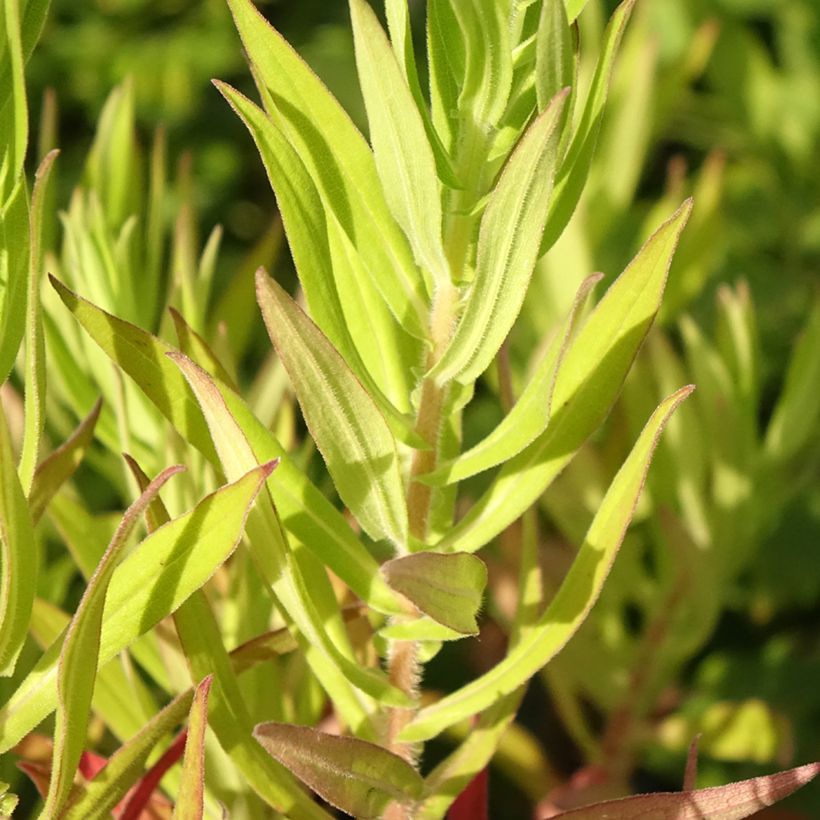

Flowering
Foliage
Plant habit
Botanical data
Aster
novae-angliae
Annabelle de Chazal
Asteraceae
New England Aster, Michaelmas Daisy
Cultivar or hybrid
Other Asters
Planting and care
Plant the 'Annabelle de Chazal' Aster novae-angliae in autumn or spring in ordinary, rich and well-worked soil that doesn't dry out too much in summer. It can tolerate temperatures as low as -25 °C. It prefers a sunny exposure but can tolerate partial shade, where it will have a slightly looser habit. It is important to avoid strong winds that could flatten the clumps. Discreet staking may be necessary in windy gardens, or to prevent water-laden flowers from flattening the clumps. Avoid moving it once established as it doesn't like change. In borders, maintain a spacing of at least 50 cm (20in) around the plant; it doesn't tolerate competition from other roots. Mulch the soil from June onwards and water in case of heatwaves. New England Asters are not susceptible to powdery mildew and downy mildew. Divide the clumps every three years to keep them flowering well. Do not replant the divisions in the same place and give them a rich soil.
Planting period
Intended location
Care
-
, onOrder confirmed
Reply from on Promesse de fleurs
Foolproof perennials
Haven't found what you were looking for?
Hardiness is the lowest winter temperature a plant can endure without suffering serious damage or even dying. However, hardiness is affected by location (a sheltered area, such as a patio), protection (winter cover) and soil type (hardiness is improved by well-drained soil).

Photo Sharing Terms & Conditions
In order to encourage gardeners to interact and share their experiences, Promesse de fleurs offers various media enabling content to be uploaded onto its Site - in particular via the ‘Photo sharing’ module.
The User agrees to refrain from:
- Posting any content that is illegal, prejudicial, insulting, racist, inciteful to hatred, revisionist, contrary to public decency, that infringes on privacy or on the privacy rights of third parties, in particular the publicity rights of persons and goods, intellectual property rights, or the right to privacy.
- Submitting content on behalf of a third party;
- Impersonate the identity of a third party and/or publish any personal information about a third party;
In general, the User undertakes to refrain from any unethical behaviour.
All Content (in particular text, comments, files, images, photos, videos, creative works, etc.), which may be subject to property or intellectual property rights, image or other private rights, shall remain the property of the User, subject to the limited rights granted by the terms of the licence granted by Promesse de fleurs as stated below. Users are at liberty to publish or not to publish such Content on the Site, notably via the ‘Photo Sharing’ facility, and accept that this Content shall be made public and freely accessible, notably on the Internet.
Users further acknowledge, undertake to have ,and guarantee that they hold all necessary rights and permissions to publish such material on the Site, in particular with regard to the legislation in force pertaining to any privacy, property, intellectual property, image, or contractual rights, or rights of any other nature. By publishing such Content on the Site, Users acknowledge accepting full liability as publishers of the Content within the meaning of the law, and grant Promesse de fleurs, free of charge, an inclusive, worldwide licence for the said Content for the entire duration of its publication, including all reproduction, representation, up/downloading, displaying, performing, transmission, and storage rights.
Users also grant permission for their name to be linked to the Content and accept that this link may not always be made available.
By engaging in posting material, Users consent to their Content becoming automatically accessible on the Internet, in particular on other sites and/or blogs and/or web pages of the Promesse de fleurs site, including in particular social pages and the Promesse de fleurs catalogue.
Users may secure the removal of entrusted content free of charge by issuing a simple request via our contact form.
The flowering period indicated on our website applies to countries and regions located in USDA zone 8 (France, the United Kingdom, Ireland, the Netherlands, etc.)
It will vary according to where you live:
- In zones 9 to 10 (Italy, Spain, Greece, etc.), flowering will occur about 2 to 4 weeks earlier.
- In zones 6 to 7 (Germany, Poland, Slovenia, and lower mountainous regions), flowering will be delayed by 2 to 3 weeks.
- In zone 5 (Central Europe, Scandinavia), blooming will be delayed by 3 to 5 weeks.
In temperate climates, pruning of spring-flowering shrubs (forsythia, spireas, etc.) should be done just after flowering.
Pruning of summer-flowering shrubs (Indian Lilac, Perovskia, etc.) can be done in winter or spring.
In cold regions as well as with frost-sensitive plants, avoid pruning too early when severe frosts may still occur.
The planting period indicated on our website applies to countries and regions located in USDA zone 8 (France, United Kingdom, Ireland, Netherlands).
It will vary according to where you live:
- In Mediterranean zones (Marseille, Madrid, Milan, etc.), autumn and winter are the best planting periods.
- In continental zones (Strasbourg, Munich, Vienna, etc.), delay planting by 2 to 3 weeks in spring and bring it forward by 2 to 4 weeks in autumn.
- In mountainous regions (the Alps, Pyrenees, Carpathians, etc.), it is best to plant in late spring (May-June) or late summer (August-September).
The harvesting period indicated on our website applies to countries and regions in USDA zone 8 (France, England, Ireland, the Netherlands).
In colder areas (Scandinavia, Poland, Austria...) fruit and vegetable harvests are likely to be delayed by 3-4 weeks.
In warmer areas (Italy, Spain, Greece, etc.), harvesting will probably take place earlier, depending on weather conditions.
The sowing periods indicated on our website apply to countries and regions within USDA Zone 8 (France, UK, Ireland, Netherlands).
In colder areas (Scandinavia, Poland, Austria...), delay any outdoor sowing by 3-4 weeks, or sow under glass.
In warmer climes (Italy, Spain, Greece, etc.), bring outdoor sowing forward by a few weeks.





































